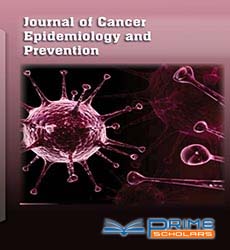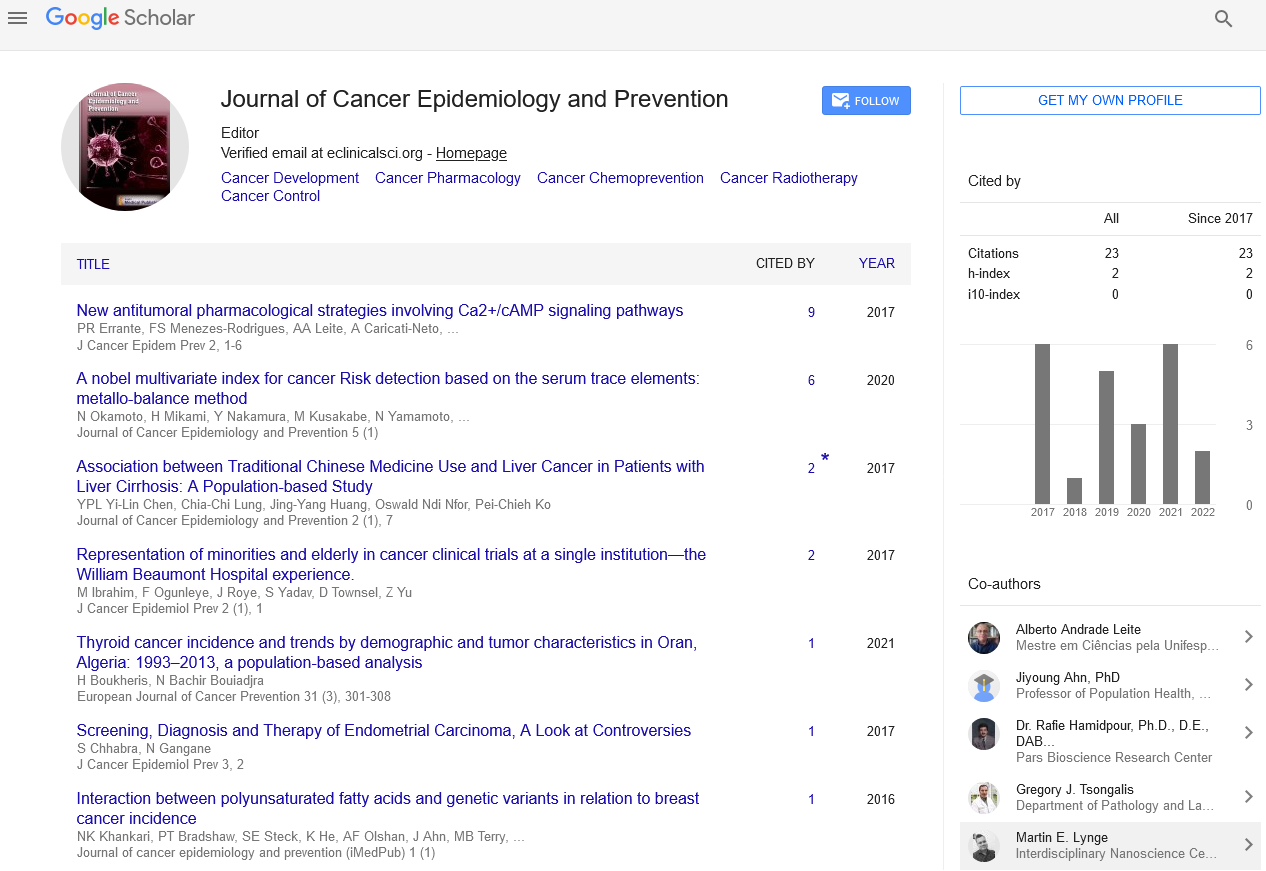Commentary - (2022) Volume 7, Issue 1
A Study on Oncology
Rodney Wildiers*
Department of Oncology, Leipzig University, Germany
*Correspondence:
Rodney Wildiers, Department of Oncology, Leipzig University,
Germany,
Tel: +494785325619,
Email:
Received: 26-Jan-2022, Manuscript No. IPJCEP-22-12867;
Editor assigned: 28-Jan-2022, Pre QC No. IPJCEP-22-12867 (PQ);
Reviewed: 11-Feb-2022, QC No. IPJCEP-22-12867;
Revised: 16-Feb-2022, Manuscript No. IPJCEP-22-12867 (R);
Published:
23-Feb-2022, DOI: 10.36648/ipjcep.7.1.002
Description
Oncology is a branch of medicine concerned with the detection,
treatment, prevention, and early detection of malignant
development. As a result, oncologists are specialists who specialize
in the treatment of cancer patients. Malignant development
has existed throughout history and is currently the leading
cause of death in the United States. Fortunately, medicines
are improving, and a better understanding of disease at the
subatomic level has resulted in improvements in endurance.
We’ll look at a few of the different types of oncology experts,
as well as how they might be studied and treated.
While the terms “onco” and “logy” both mean “mass” and
“study,” not all tumours generate a mass. Many diseases can
arise from epithelial cells (such as bosom pipes and pulmonary
aviation routes), connective tissue (such as sarcomas), or
platelets (like leukemias and lymphomas). Even diseases that
appear in the same tissue (for example, the lungs) differ on a
subatomic level, with the final aim of making no two tumours
indistinguishable. There are a few elements that make a disease
cell a malignant growth cell, as opposed to benign situations
or growths. Disease is caused by the uncontrolled growth
and proliferation of a cell, which is initiated by a series of alterations
in a normal cell. There are symptoms of malignant
growth that distinguish it from non-cancerous conditions. Despite
their uncontrolled growth, disease cells attempt to create
new blood vessels to supply their growth, block passage, and
do a lot more.
Tacky chemicals called as bond particles are regularly used by
malignant development cells to keep them in place. This allows
the cancer cells to spread (metastasize) to other parts of the
body. In fact, it is growing metastasis that is to blame for the
majority of disease-related deaths (essentially strong cancers).
People who are certain they have malignant growth may desire
to learn a new dialect in order to learn more about their
infection. “Obtrusive illness” is a term that many people are unfamiliar with. Invasive malignant growth does not suggest
that the cancer has spread or metastasized; rather, it indicates
that the cancer may spread.
Many epithelial tumours begin as a patch of odd tissue (dysplasia).
This can progress to carcinoma-in-situ, often known as
CIN. With CIN, the phones are still protected by what is known
as the basement film, and if that is removed, they are theoretically
100% reparable. The irregularity is subsequently seen
as intrusive malignant development when cells extend through
the cellar layer. In fact, even little growths, such as phase IA
bosom disease, are referred to as “invasive” disease. Sarcomas,
unlike carcinomas, do not have this precancerous stage, and
hence approaches for early detection cannot detect these tumours
at the carcinoma-in-situ stage.
We’ve come a long way since Hippocrates debunked strange
theories about malignant growth and attributed the illness to
regular causes, all other factors being equal. At the time, it was
thought to be due to an unequal distribution of blood, bodily
fluid, bile, and other body fluids. We now understand that
disease develops when a series of alterations in a normal cell
leads to the uncontrolled growth of a tumour. This typically recalls
changes for the two oncogenes as well as cancer silencer
properties.
Transformations can occur as a result of exposure to cancer-
causing chemicals in the environment or as a result of the
normal digestion of cells. Inherited mutations can also make a
person more susceptible to disease. It is extremely difficult for
a normal cell to transform into a malignant growth cell, and
the body has several mechanisms in place to prevent this. It’s
crucial to distinguish between innate and acquired alterations.
The majority of malignant changes occur after birth. The longterm
accumulation of these alterations is the explanation for
why sickness becomes more common as we age. Occasionally,
though, a combination of intrinsic and acquired changes is
possible.
Acknowledgement
None.
Conflict of Interest
The author declares there is no conflict of interest in publishing
this article.
Citation: Wildiers R (2022) A Study on Oncology. J Cancer Epidemiol Prev. 7:002
Copyright: © Wildiers R. This is an open-access article distributed under the terms of the Creative Commons Attribution License, which permits unrestricted use, distribution, and reproduction in any medium, provided the original author and source are credited.

